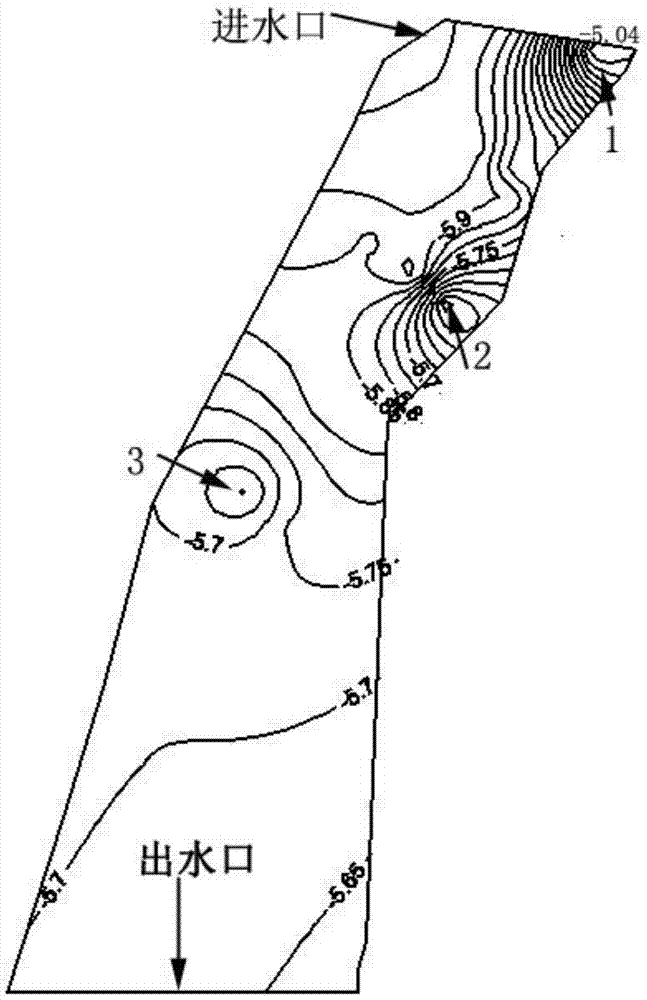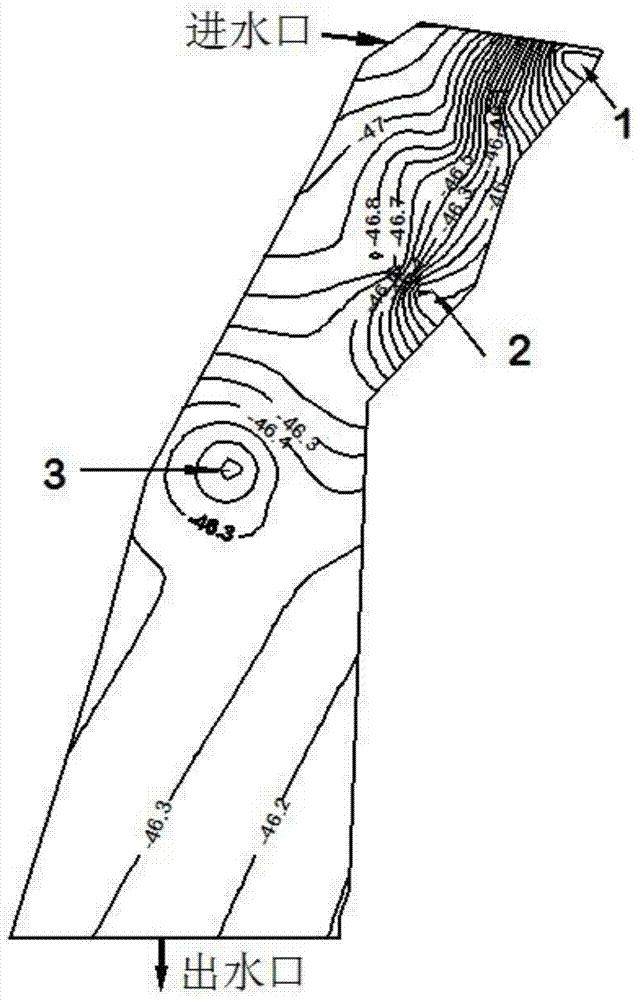Method for evaluating flow pattern of constructed wetlands by using hydrogen or oxygen isotopic abundance
A technology of isotopic abundance and oxygen isotope, which is applied in fluid dynamics tests, testing of machine/structural components, instruments, etc., to achieve the effect of strong practicability, lower cost and less time-consuming
- Summary
- Abstract
- Description
- Claims
- Application Information
AI Technical Summary
Problems solved by technology
Method used
Image
Examples
Embodiment 1
[0014] The wetland system to be tested is an area with an area of 100-10,000 mu, and the location of the sampling points on this water area is determined by the grid point method. Determine the monitoring section along the direction of water flow. The distance between each monitoring section is generally between 100-300m. When the width of the monitoring section is less than 50m, only one sampling point is determined in the middle of the section; Two sampling points are set at 10-30m near the shore; when the water surface width is 100-1000m, three sampling points are set at the left, middle and right. Reinforce placement in areas where short or slow currents are likely to exist. Sampling in weather with no wind and low humidity, use GPS to locate each sampling point, use a water sampler to collect 100ml of 3 mixed water samples at 20-30cm below the water surface at each sampling point, and place the water samples in plastic Store the vials at low temperature and away from l...
Embodiment 2
[0016] Determine the locations of plant sampling points in the monitored wetlands. The determination of the sampling points is the same as in Example 1. About 100 g of plant leaves are collected at each sampling point, placed in a sample bag, refrigerated and protected from light, and brought back to the laboratory. Vacuum distillation was used to extract water from plant leaves to obtain water samples to be tested. After the water samples passed through a 0.22 μm filter membrane, the abundance of hydrogen or oxygen isotopes was measured with a Picarro water isotope analyzer. Draw the isotope abundance contour line of the area to be evaluated according to the data of the sampling points obtained from the measurement. According to the isotope contour line, 2 H or 18 The area with high O abundance and obvious edge with other areas of the wetland is the slow flow area or dead water area, from the water inlet to the water outlet 2 H and 18 The area where the O abundance is relat...
Embodiment 3
[0018] Determine the location of plant sampling points in the monitoring wetland. The determination of sampling points is the same as in Example 1. About 100 g of plant roots are collected at each sampling point. The test and analysis method is the same as in Example 2.
PUM
 Login to View More
Login to View More Abstract
Description
Claims
Application Information
 Login to View More
Login to View More - R&D
- Intellectual Property
- Life Sciences
- Materials
- Tech Scout
- Unparalleled Data Quality
- Higher Quality Content
- 60% Fewer Hallucinations
Browse by: Latest US Patents, China's latest patents, Technical Efficacy Thesaurus, Application Domain, Technology Topic, Popular Technical Reports.
© 2025 PatSnap. All rights reserved.Legal|Privacy policy|Modern Slavery Act Transparency Statement|Sitemap|About US| Contact US: help@patsnap.com


